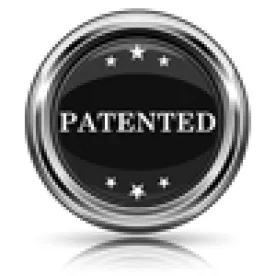Takeaway: The key to a real party-in-interest inquiry is the relationship between the potential unnamed real party-in-interest and the proceeding, not the relationship between parties.
In its Final Written Decision, the Board found that Petitioner established by a preponderance of the evidence that the challenged claims of the ‘781 patent are unpatentable as anticipated by Divsalar and rejected Patent Owner’s argument that the Petition failed to name all real parties-in-interest. The ‘781 patent “describes the serial concatenation of interleaved convolutional codes forming turbo-like codes.”
Patent Owner argued that Petitioner failed to name all real parties-in-interest (RPI), including EchoStar Corporation and the Dish entities. Regarding EchoStar: “The evidence of record indicates that EchoStar is the parent company of [Petitioner] Hughes” and that “Petitioner identified EchoStar in the ‘Real Parties in Interest’ section of the Petition as the parent of Hughes.” However, “[t]here is no evidence that EchoStar controls this inter partes review.” The Board found “that Petitioner has identified Echostar in accordance with the Board of Patent Appeals and Interferences guidance of August 12, 2004” and was “not persuaded that Petitioner has failed to name EchoStar as a real party in interest.”
As for Dish:
During the conference call of February 25, 2015 Petitioner indicated that Dish is a spinout of EchoStar. Patent Owner argues that public documents describe EchoStar as “calling the shots” for its subsidiaries. Patent Owner recounts various activities with respect to the District Court litigation that suggest Dish is a real party-in-interest. . . . Petitioner persuasively argues that Patent Owner failed to show that the Petition was filed at the behest of Dish. The key to a real party-in-interest inquiry is the relationship between the potential unnamed real party-in-interest and the proceeding, not the relationship between parties.
Thus, the Board found that there “is no persuasive evidence of record that [subsidiary] Dish controls or even had an opportunity to control Hughes’ decision to file or maintain this inter partes review.”
The Board next determined that the asserted reference was a prior art printed publication. “Based on the same named authors that appear in bibliographic citations in the 1998–1999 time frame, we find that the evidence of record supports that a relatively small community of artisans worked in error correction coding, several of whom referenced the Divsalar paper.” Thus, the Board found that the “paper was published to the relevant community of skilled artisans well before the earliest effective filing date of the patent at issue” and is prior art with respect to the ’781 Patent based on a totality of the circumstances.
The Board denied Patent Owner’s motion to strike the declaration of Petitioner’s expert because she was not available for cross-examination. “We find that if Patent Owner intended to strike [Petitioner’s declarant’s] testimony, it should have timely objected to it, or requested a call with the Board to move to strike her testimony during the discovery period in this inter partes review, when Petitioner could have sought a subpoena.” The Board found that “Patent Owner is not permitted to raise this issue after the close of discovery” and “the burden to make [the declarant] available was on Petitioner,” but “Patent Owner did not avail itself of appropriate remedies when it could have done so.”
The Board further denied Patent Owner’s motion to strike the declaration of Petitioner’s in-house counsel as untimely. “Patent Owner’s only complaint appears to be that it cannot respond to Petitioner’s Reply ‘with its own argument or evidence.’” The Board found such an argument “specious” because “Patent Owner did not even attempt to cross-examine or submit observations on that cross-examination.”
Finally, the Board denied Patent Owner’s motion to exclude various exhibits filed with the Petition but not otherwise relied upon as irrelevant and prejudicial. The Board did “not find these exhibits to be prejudicial or confusing and decline[d] to exercise [its] discretion to exclude them.” The Board instead found “these exhibits to be helpful in understanding background and context related to the advances described in the ’781 Patent and in understanding the community of those who might be considered to be skilled in the art to which the ’781 Patent pertains.”
Hughes Network Sys., LLC et al. v. California Institute of Tech., IPR2015-00059
Paper 42: Final Written Decision
Dated: April 21, 2016
Patent: 7,916,781 B2
Before: Kalyan K. Deshpande, Glenn J. Perry, and Trevor M. Jefferson
Written by: Perry
Related proceedings: California Institute of Tech. v. Hughes Communications, Inc., No. 13-07245 (C.D. Cal.); additional inter partes review petitions.



 />i
/>i

